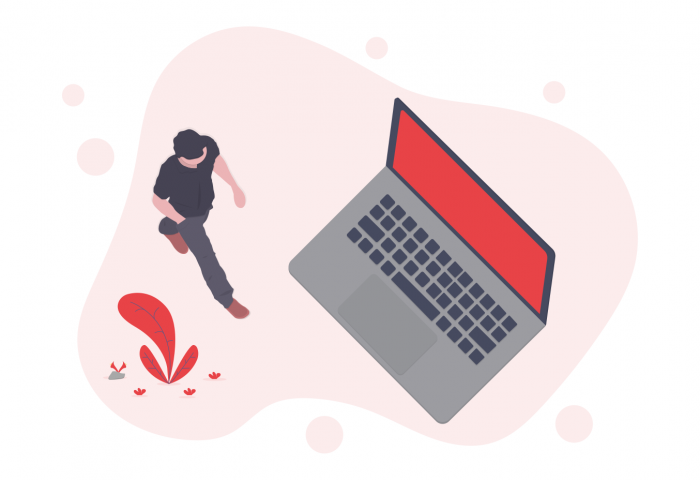Living the dream for a digital nomad means being able to travel anywhere in the world and work anywhere, anytime. But it’s not all fun and games (it is mostly, but not all). Digital nomads, just like every other Working Class Hero, still have to work.
In fact, we’re a group that most often wants to work like crazy. We truly love what we do, and that’s part of why we’re living this somewhat-crazy-but-extremely-rewarding lifestyle. To be able to live a life filled with travel and new experiences, we can’t just be decent at what we do – we must be great. The only way to produce great work while you’re traveling is to be organized.
Tools to Stay Organized While Traveling Professionally
Hardware: Finding The Right Laptop
Having a reliable and efficient personal computer is obviously the gateway to the Digital Nomad life. This machine will be the home of your business. Without it, you’re a pretty useless digital nomad! So, it needs to be decent quality with at least 8 gigs of RAM to be able to run any creative programs.
Given the nature of a professional wanderer, your laptop shouldn’t necessarily be the most expensive piece of machinery on the market. When we at VisualFizz have traveled with very pricey laptops, we’ve found that they’re more of a hindrance than helpful. Constantly worrying about its safety, its durability, keeping it pristine, etc, means that we spend more time (and brainpower) trying to prevent issues with regard to our laptops than we do producing incredible work!
We’ve found that a mid-grade personal computer–one that you wouldn’t be devastated to lose and won’t break the bank–paired with a quality, well-padded laptop bag is all the digital nomad needs to find the sweet spot between a quality device and peace of mind.
Cloud Storage and Auto Backup Software
A reliable cloud-based storage location and consistent backup software are as non-negotiable as a durable and fairly inexpensive laptop. Finding cost-effective backup software to run in the background as you work is an invaluable resource for the digital nomad.
While the go-to Google Suite offers a lot of basic tools free of charge, there are other options worth investigating. Dropbox provides a lot of space as well, for example. Our team likes EaseUs BackUp; it’s free, it’s versatile and you can customize it to suit your needs.
Google Drive
While Google isn’t the be-all and end-all of cloud storage, Google Drive tends to be the go-to cloud storage for many digital nomads and businesses alike (including VisualFizz!) The Google Suite offers a ton of integrations and basic tools to organize your files and keep you efficient, but there are plenty of other cloud-based storage tools that can do the same. TechRadar offers a great overview of the Top 10 Best Cloud Storage Systems in 2017 if you’re interested in the latest cloud systems.
Organizational Tools To Bring It All Together
“No man is an island.”
Since most of us work regularly with other people, traveling freelancers need a centralized project management tool to keep track of deadlines, projects, and all the nitty-gritty details.
- Trello is just about as simple as it gets – it’s a glorified checklist at the end of the day, but it does integrate extremely well with a range of other tools, such as Harvest and Slack.
- We also like Basecamp, as it’s easy to use and has everything you need to manage full teams in one virtual place.
- Zendesk, although commonly geared more toward the dev and tech community, is another great tool that sends you direct e-mail reminders, which can prevent vital details from falling through the cracks.
Centralized Communication For Any Time Zone
The number one essential tool for teams (even over and above your project organizer) is a centralized communication channel. We love Slack for keeping people in different time zones up to speed on the same projects. You can set specific ‘Do Not Disturb’ times adjusted to your time zone that silence notifications until a preferred hour, which is fantastic for the ever-elusive concept of work-life balance. It also notifies those trying to contact you that you are in Do Not Disturb mode, so they know they might not hear back from you for a few hours. Slack is a fantastic platform that makes managing remote teams both easy and fun.
For video conferencing across the globe, we use Google Hangouts or Zoom as a couple of our favorite video options. One of the great things about Google Hangouts is that it integrates seamlessly with the rest of the extensive Google suite–ensuring that it can automatically connect with your calendars, shared folders, Google sheets, and so much more.
Time Trackers: See Exactly Where Your Time Is Spent
Time tracking is a critical and hella-annoying task that most of us can’t avoid. You can’t give an hourly rate for your work if you don’t track your time, and you can’t possibly accurately scope a project without knowing how much time you spend on core tasks.
A couple of our favorite time tracking tools are:
- Harvest, which is predominantly an invoicer tool that also allows you to track or log time manually, although you might need to upgrade to the premium version.
- Toggl offers a very user-friendly and effective free time tracking option and offers a wide range of views and summaries to make time tracking as easy and mindless as possible.
For us, time tracking helps our team to stay focused on the current task and keep passing time in mind, rather than following our digital whims onto travel sites and into plane bookings down the rabbit hole.
Ka-Ching: Managing Your Money Safely
Money is a means to an end, but it’s pretty impossible to travel without it. Keeping your finances organized, your budget under control, and the money rolling in is critical to a long-term digital nomad lifestyle.
Paypal is globally-recognized as the staple of money management, but you probably already knew that. Payoneer, available in over 200 countries and in over 100 currencies, is a fairly new tool for freelancers and affiliates to receive global payments. Payoneer sends and receives payment through a credit card, so be sure to check out the applicable fees before deciding if this is the right tool for you. Another great finance management platform is Mint; it’s an incredibly powerful and thorough tool that closely monitors your spending habits and budgets, helping you to track multiple sources of income, expenses, assets, investments, lines of credit, and all of your financial accounts in one place. You can chart your spending habits and income over time, and learn new ways to whittle down budgets and save some change.
Mint also provides a free (like for real ‘free’, not like ‘give us your email and we’ll spam you a ton’ free) credit score that updates every month, alerting you when changes occur. It’s pretty sweet, and its popularity continues to expand. Check it out; you won’t be sorry!
Last of all: You Can’t Travel Without a Healthy Body
Invest in a wearable fitness tracker, like a FitBit or something similar. You can track your steps and heart rate while you travel so that you can get an idea of how much exercise you need to keep up after returning home. We tend to walk a lot while we travel, and when we get home, we let it slip.
Get a Fitbit (or something similar) so that you can keep track of your exercise while abroad and keep it up when you get home. It also gets kind of obsessive – but in a good way. Once you start looking at that (beautifully integrated and updated) digital calendar with your fitness track record on it, you will feel compelled to keep the activity chart looking colorful. The end result is a healthy, fit version of you–who, if you’re like us, is always looking for some new activity to make the calendar more colorful.
Oh, and don’t forget your passport!
Have other tips for maintaining productivity while traveling? We’re all ears! Please share your thoughts in the comments section below.




Responses